Braces (Orthodontics)
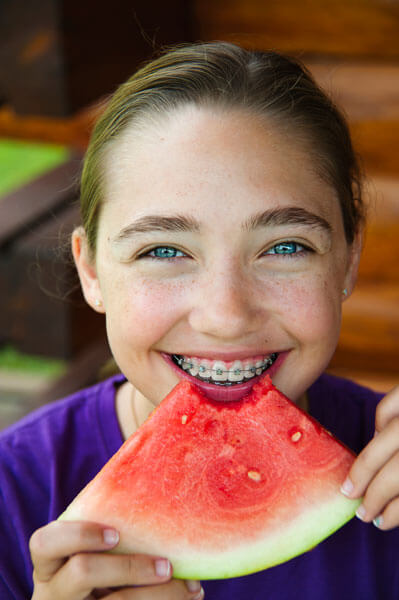
Another unique aspect of our practice is that we are able to offer our patients orthodontic (braces) services. Dr. Nathan is the only pediatric dentist in the Greater New Orleans area that does any of his own braces. All other pediatric dentists in our area refer their patients to another dentist and/or another office for braces treatment. Dr. Nathan can usually handle all of your child’s dental needs…cleanings, cavities, braces, and wisdom teeth at our versatile office. How great and easy is that?!!
Dr. Nathan is able to do this because he had extensive orthodontic training in his 2-year pediatric dental residency and continues to take extensive continuing education every year to better educate himself and his team on proper braces techniques.
Orthodontics are used to assist in aligning and straightening teeth in order to not only improve appearance, but improve your child’s bite. Having braces isn’t just about improving your smile; it’s also about improving your overall dental health. Better-aligned teeth allow you to clean your teeth more easily and more efficiently to better help keep your gums and underlying jawbones healthy. Orthodontics may be used to correct overbites, underbites, cross-bites, deep bites, crooked teeth, spaces between teeth, and other issues of the teeth and jaws. Braces may be used in conjunction with other orthodontic appliances to help make corrections to your child’s bite to allow for proper growth and development of their teeth and jawbones.
Children’s mouths are constantly growing and constantly changing. Every child’s growth and development can be very different and unpredictable at different ages. Some children may need an early round of braces to prevent problems from getting worse before starting treatment. This is called Phase I treatment and may be started when your child has a mix of baby and permanent teeth, typically around ages 8-10. These children may or may not need a second round of braces (known as Phase II or the “finishing and detailing phase”). Our goal in Phase I would be to hopefully correct issues early, so that your child may not need a Phase II at all or a very limited Phase II.
Other children may not need a Phase I treatment at all and may benefit from waiting for all the permanent teeth to come into the mouth and then starting braces. This is called Phase II treatment, if your child had Phase I treatment. As your child grows, Dr. Nathan will always do a free orthodontic consult at each 6-month cleaning and check-up appointment. If any orthodontic treatment is indicated, Dr. Nathan will discuss as needed.
Other situations may arise that require the extraction of baby or permanent teeth, space maintenance, cross-bite correction, thumb/finger-sucking correction, or orthodontics (braces and/or various appliances). Again, at each appointment, we will assess your child’s needs as they grow and advise you of your options should they need any orthodontic treatment. Some cases can be more complicated or involved than others. Each case is meticulously evaluated and may need to be referred out to a specialist if we feel that we cannot meet all your needs at our office.
Traditional Metal Braces

Dr. Nathan recommends and mostly uses traditional metal braces. These are made from stainless steel and various metal wires. They remain the most popular choice for braces and are very effective. Dr. Nathan only uses brand new braces components for each patient. He never “recycles” or “reuses” braces components from other patient cases.
Orthodontic Retainers / Whitening Trays
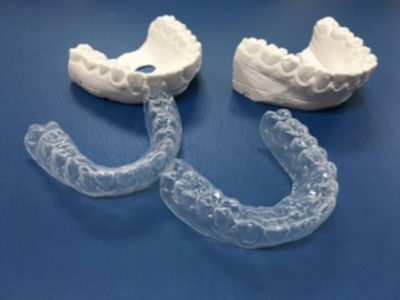
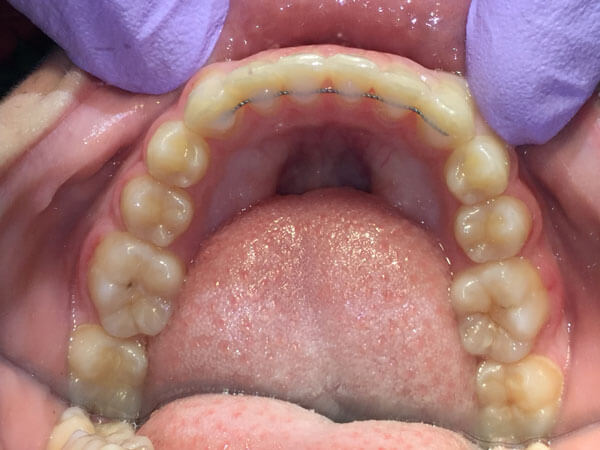
Once orthodontic treatment with braces is completed, either after Phase I or Phase II, your child will have retainers that they will wear to help prevent the permanent teeth from shifting. These are included in the cost of the braces. Please keep in mind that with or without prior braces treatment, all teeth shift with age and time. To minimize any shifting, we place retainers. Some retainers are glued to the permanent teeth and do not come out of the mouth. Other retainers are custom made clear aligners that fit over the teeth and can be removed from the mouth. These are typically done for a completed Phase II case where all the permanent teeth had braces. Sometimes, we recommend a combination of both type of retainers. Dr. Nathan will advise you on the type your child may need. We will also advise you on how and when to properly wear these retainers. As all teeth shift with age, your child will be expected to wear their retainers as long as they want their teeth to be straight, which could be their entire lifetime. Each person and each case is unique, so shifting varies tremendously from person to person.
One unique aspect of our clear aligner retainers is that they can also double as bleaching trays, should your child ever want to whiten their teeth. If you were to go to a dentist and wanted to purchase bleaching trays by themselves, you would be charged anywhere from $300-$500. Because your child would already have the clear aligner retainers, you would only have to purchase the bleach from us (around $60) to then be able to professionally whiten your child’s teeth at home for the rest of their life.
Space Maintainers
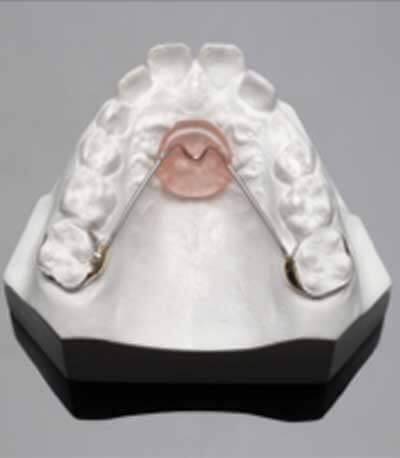
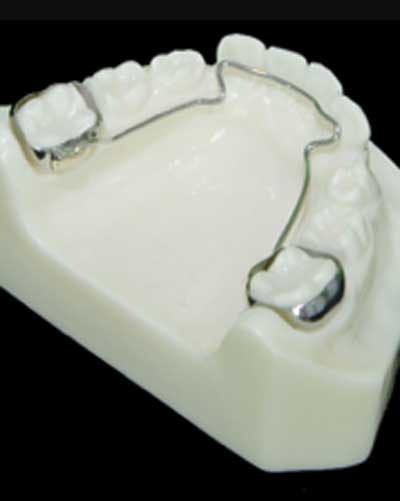
Space maintainers are used to prevent a permanent and/or baby tooth from drifting into an empty tooth space due to the early loss of baby teeth. Baby teeth act as a guide to direct permanent teeth into their normal positions. These space maintainers hold the permanent or baby tooth in its normal position to prevent space loss and subsequent crowding of your child’s teeth. They help hold the space needed for your child’s permanent tooth to come in its normal position in the mouth. Different types of space maintainers are used depending on your child’s age and space maintenance needs. A space maintainer is made of stainless steel and is cemented to your child’s permanent or baby tooth as needed. They do not come in and out and will stay in place until the permanent tooth has come in to this space, which could be several years. Your child can eat, brush, floss, and talk as normal. However, sticky candies do need to be avoided, as they could break the space maintainer or pull it off the tooth completely. If one comes loose or comes out, please save it to bring to our office. You can always call us if you have any problems. Dr. Nathan will monitor this at your child’s normal 6-month appointments and remove the space maintainer once the permanent tooth has fully come into its correct position.
Cross-Bite Appliances
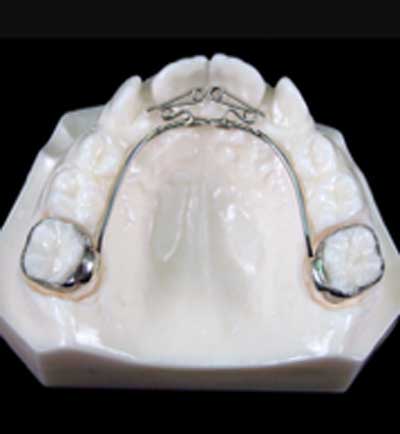
These appliances help correct “cross-bites.” Cross-bites occur when some of the lower teeth edges are outside of the upper teeth edges. This can happen in the front of the mouth or the back of the mouth. This can be result of the upper and lower jaws being misaligned or just the teeth being out position. Typically, we only correct this if it involves the permanent teeth. A cross-bite with the baby teeth may correct itself as the permanent teeth come into the mouth. Each case can be different. This condition can cause unhealthy wear patterns or fractures of the teeth, which could lead to gum disease and bone loss. We try to correct cross-bites around ages 6-10, before this leads to more complicated problems. These appliances are made of stainless steel. They are typically cemented to the back teeth, with a spring that pushes the problematic teeth into their normal position. They do not come in and out of the mouth. It usually takes 2-6 months of wearing the appliance to correct these cross-bites. Dr. Nathan will discuss the treatment in depth as needed.
Palatal Expander Appliances
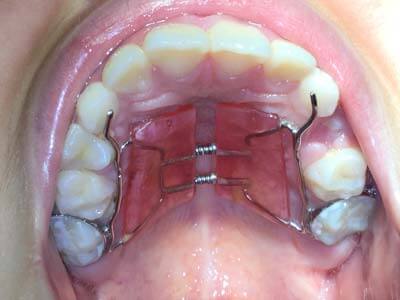
Some children have a narrow or constricted upper jaw (known as the maxilla). This constriction may cause the front teeth to stick out in a forward direction. It may also result in crowding of the permanent or baby teeth and may even result in a cross-bite (as discussed in the previous section). As a way to alleviate crowding, correct the cross-bite, and produce a more favorable shape of the upper jaw, a palatal expander appliance may need to be placed in your child’s mouth. This is typically done around ages 7-11. This appliance is made of stainless steel and acrylic and is cemented on the back permanent teeth. It does not come out of your child’s mouth, and has a spring action that widens your child’s upper jaw. Typically, this is accomplished in 3-6 months time. Your child may then have to continue to wear the appliance for another 6 months to act a retainer to hold the new shape of the upper jaw. Dr. Nathan will then remove it in the office when the desired result has been achieved.
Thumb/Finger Sucking Appliances
and Tongue Thrust Appliances
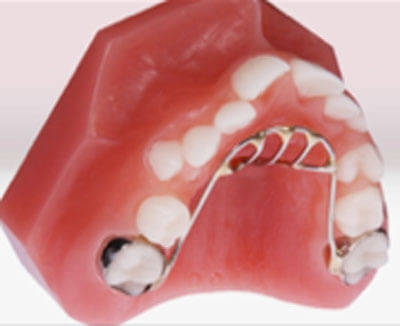
Many children develop the habit of sucking their fingers or thumbs at an early age. Although not a real problem at first, if this habit continues past age 3-4, then it could cause the top front teeth to stick outward and the bottom lower teeth to lean backward. This could then result in a child having an open-bite, where their front teeth do not come together. Open-bites are one of the toughest bite problems to correct with orthodontics and are very prone to re-occurring once corrected. Therefore, it is very important to address and hopefully stop a finger or thumb sucking habit at an early age. We typically like to have this habit stopped by ages 3-5.
Some children have a very hard time stopping this habit, as they do it as a means to comfort or soothe themselves. There could be other family or social issues going on that may not make it an ideal time to stop. This could include a new sibling, a new house, a change in the family, or a new school, to name a few. Each child is different and has to be treated on an individual basis. Dr. Nathan can discuss with you the different options to try before resorting to an appliance. However, if all the other options have been tried and the child continues the habit, then an appliance to help the child stop could be indicated. This would be especially true if they are still doing the habit and have permanent teeth, as it could cause the upper and lower jaws to grow in an unfavorable direction.
These appliances can also be useful in children that have a tongue thrust or tongue swallowing concern. If a child has an open bite, then they automatically push their tongue forward into this open area to create a seal to swallow. Thumb/finger sucking appliances help stop a thumb or finger habit and/or help re-train an improper tongue position or swallowing pattern. It could be necessary to place the appliance to minimize the harm and distortion these habits or tongue position can have on the teeth and the jaws. These appliances are cemented to the back permanent or baby molars and have a wire that runs behind the front upper teeth. There are loops on the wire that prevent a child from being able to stick their tongue forward and prevent being able to stick their fingers or thumb into their mouth. They can’t close on their fingers or thumb to make the sucking sensation that they like. This appliance does not come in and out of the mouth and is generally left in position for at least one year, to ensure that the habit is totally gone. If the teeth/jaws are out of their normal position and if the habit is corrected at a young age (before all the front permanent teeth come in), then we usually see a spontaneous correction of the bite and teeth position. Of course, each case can be different, and treatment outcomes can vary. The main goal is to stop the habit. The child may or may not need additional orthodontic (braces) treatment in the future.
Ectopic Eruption Appliances
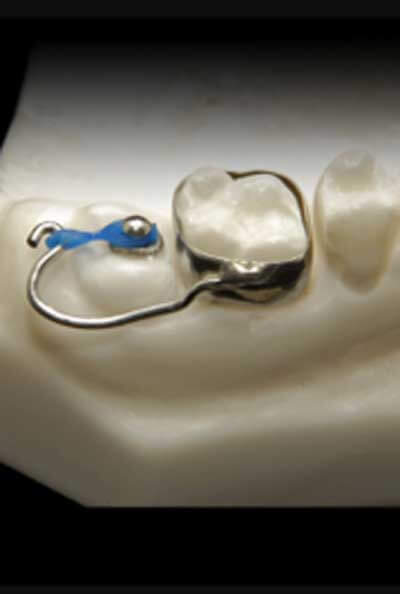
This appliance is indicated when a permanent molar is coming (erupting) into the mouth in a unfavorable forward direction on top of a baby molar and may push it out earlier than desired. Normally, the permanent molars slide in behind the baby molars and do not “push out” any baby teeth. This typically happens around age 6 (the 6-year old molars), then again at age 12 (the 12-year old molars). If the permanent molar does erupt in the wrong position, then it is called “ectopic eruption” and may need to be corrected with an orthodontic appliance called and an “ectopic eruption appliance.” Again, these appliances are made of stainless steel. They are typically cemented to the back baby teeth, with a rubberband that pulls the problematic permanent tooth back into its normal position. These appliances are easy to wear (do not come out of the mouth), very effective, and can prevent crowding and early loss of baby teeth. Each case is different and will be discussed as needed.
